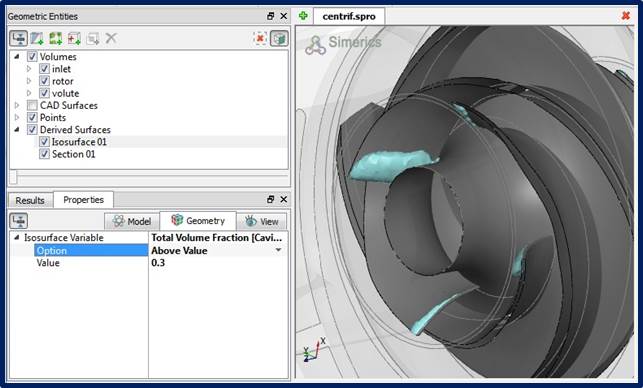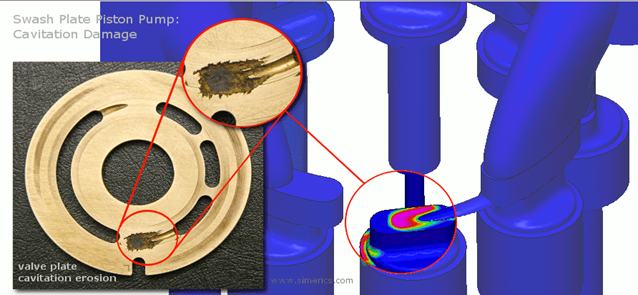Damage can occur in fluid systems due to vapor bubble collapse and/or “water” hammer effects. The Simerics Cavitation module can capture both effects by 1) modeling the formation and collapse of vapor (Cavitation) and 2) simultaneously modeling the formation and collapse of non-condensable gases (NCGs), such as dissolved or entrained air, as ideal gases.
For more information on the capabilities of the Simerics Cavitation Module, go to Simerics’ Aeration/Cavitation Model.

Cavitation bubble formation on an impeller displayed as an isosurface in PumpLinx
Animating Bubble Dynamics: Displaying the predicted vapor and NCG bubble dynamics as an animation provides a qualitative indication of the severity of bubble formation and collapse, in the same manner as would a hardware test if one could see the bubble dynamics inside the fluid. Bubble collapse does not directly indicate damage, but with experience and through comparison with experimental data it can provide an invaluable tool for indicating the probability for damage, and can effectively be used to compare one design to the next.

PumpLinx prediction of cavitation damage on the valve plate of a piston pump
Damage in a Piston Pump: The image above shows the predicted volume fraction of air and vapor as a function of time, with magenta indicating a region of 100% gas. The predicted formation and collapse of gas as the low pressure cylinder connects to the high pressure port clearly correlates with the observed damage.
Damage Model: A more quantitative indicator of the potential for damage, is to map the wattage associated with the water hammer effect created by bubble collapse. This is still qualitative, since the potential for damage also depends on the underlying material, but as with the bubble animations, it has been shown to be a very useful tool for 1) understanding the cause of damage, and 2) analyzing and comparing new designs.